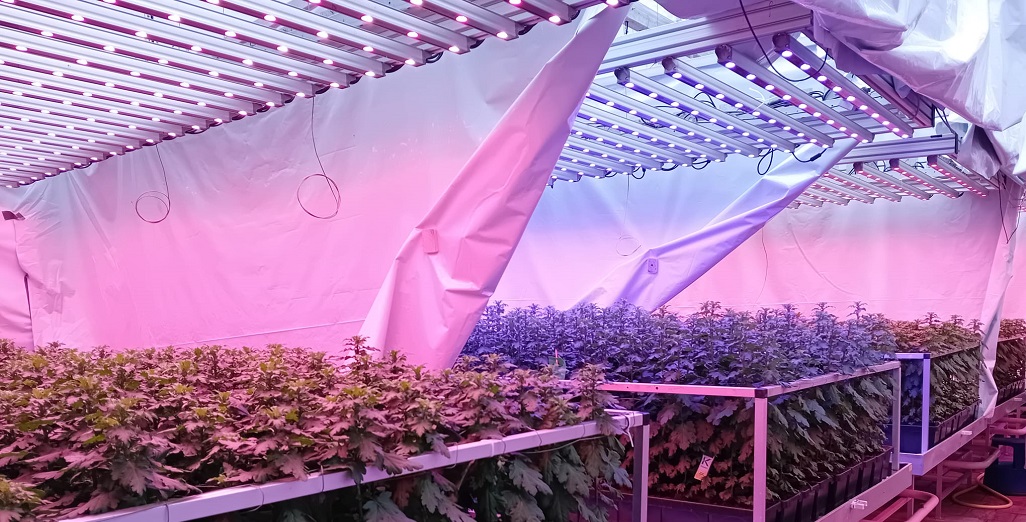Sign up here to subscribe to the Grower2grower Ezine. Every two weeks you will receive new articles, specific to the protected cropping industry, informing you of industry news and events straight to your inbox.
Jun 2018
The Big Chill

The Big Chill
Strong Vegetative Plants at Risk of Disease
You may have noticed it has become quite wet and cool. We haven’t had a seriously cold winter for a few years but this year could be one. A temperature was recorded of -1.8 at the top of the Bombay hills on the morning of the 25th of May.
I have heard, from chatting with various people, that the poor weather has coincided with increased disease pressure and increased fungicide usage. It is a concern as these diseases could be reduced or even in some cases prevented. There a few reasons why I think this happens. One contributing factor may be that crops were not heated sufficiently in autumn. Not heating in the autumn, as well as over friendly irrigation, will potentially cause plants to become vegetative. This will cause the issues some growers are facing currently. During March and April light levels are still very good and it is relatively warm, it may seem pointless to prune fruit (tomatoes) but if you did not prune adequately, 6-8 weeks ago, your plants will now be carrying too much load for the light we currently have and still trying to set fruit currently whilst under extreme pressure. This will add unnecessary stress to your plants. Growers that have a ‘fat stem’ and large leaf index are extremely prone to increased fungus pressure. It is a misconception to think a fat stem with a large leaf is a sign of healthy plant. It is a sign of a strong plant. You may have heard me compare this type of plant to a sumo wrestler! A sumo wrestler is extremely strong and powerful but will probably not live past the age of 35! In comparison a tomato plant picking past its 9th truss. It is ok for short crops but for long cropping it is a big no in my book.
Recently I came across a crop I can only describe as eye popping and thought provoking, the grower could not believe my excitement and enthusiasm for a plant that in his eyes looked less than desirable. However, it was one of those moments that contribute to my love for this industry. To better explain, the crop was very old and close to having its heads pinched. The plant was thin and there was inconsistency in fruit size. However, a very good percentage of the plants were like long-distance runners, small but strong, fit and full of endurance. The leaf length was moderate and the leaf colour was a deep dark green. This particular crop was one of two greenhouses on the site. The other greenhouse (house 2) had recently started picking, the stems had become very large and the leaf very long and wide and the fruit size was extremely big for the variety. The old plants (house 1) looked very healthy and were almost totally free of any disease. House 2 was completely contrasting, and an indication of how strong vegetative plants even with high fruit load will time and time again get you into trouble.
In my early years as a grower I definitely preferred the ‘sumo wrestler’ plant and it took me a long time to figure out, with experience and some very good advice, that there are better options. It takes trusting in others ideas and experiences and then making the necessary adjustments. Using crop registration and setting plant targets is key. I like a plant somewhere in the middle, a strong plant which has its fruit load per m2 balanced in relation to light.
The crop, that was older but free of disease, was the perfect illustration of a tomato plant that could be used for understanding the change of direction you could make and certainly gives confidence there is room for improvement. There is no risk in growing a plant to its potential. Plants will give you signals when it is reaching its limitations, the trick is to interpret the data and try your best to guide long cropping plants through their marathon, ensuring as many plants as possible reach the finish line, while maintaining strong production.
I appreciate your comments. Please feel free to comment below or on the grower2grower Facebook page:
https://www.facebook.com/StefanGrower2grower/
Article Written by Stefan Vogrincic, Consultant, Grower2Grower
CLASSIFIED
Subscribe to our E-Zine
More
From This Category

Ground cover: woven weed mat or solid plastic… or both?

Integration of Philips GrowWise control system with climate computer allows Huisman Chrysanten to light more effectively and efficiently

New Philips GreenPower LED toplighting force 2.0

Condensation re-visited

Philips GrowWise Research Center to test and showcase intelligent lighting

























